Team:UCL/about
From 2014.igem.org
(Difference between revisions)
| Line 42: | Line 42: | ||
<h4>Implementation in Industry</h4> | <h4>Implementation in Industry</h4> | ||
| - | <p> | + | <p>In the textile industry today, annual production of dyestuff amounts to millions of tons globally. Azo dyes represent two thirds of this value, a majority of which find their way to wastewater. |
| + | <br><br> | ||
| + | Our idea is to conceive an integrated end-of-pipe method for detoxifying effluent streams of dye factories. The goal is to achieve a two-stage regimen in sequence to ensure optimal conditions for the degradation of azo dyes within a batch bioreactor system. This would be an attractive and effective approach to dealing with azo dye contamination of the environment. As a financial incentive, we are also looking at maximizing the profitability of various potential breakdown products. As a lucrative continuous-process alternative, we are investigating the application of microbial fuel cell technology to an aerobic bioreactor system, for simultaneously detoxifying azo dyes and generating electricity. | ||
| + | <br><br> | ||
| + | Considering the potential for scalability, this method would present various economic and environmental advantages for industries that generate large amounts of dyestuff. This could also be spinned to become a modular bioprocess method for wastewater treatment of other toxic, normally recalcitrant chemicals. </p> | ||
<h4>Recycling Azo Dyes</h4> | <h4>Recycling Azo Dyes</h4> | ||
Revision as of 10:39, 8 July 2014
 "
"

 Azo dyes are the main synthetic colourant used in the industrial manufacture of a wide range of products such as clothing, upholstery, cosmetics, tattoo ink and more. These dyes are widely known to be safe and stable forms of synthetic colourants, however, when they are broken down in the guts of organisms they take on dangerous properties. In industry, leftover dye effluent is often not properly disposed of, or removed, during water treatment, which results in the accumulation of azo dyes in water bodies. It is at this point that these excess dyes are ingested, broken down, and excreted as products that have been found to be mutagenic and carcinogenic. Despite such toxicity, little to no effort has been made to dispose of these leftover azo dyes more responsibly.
Azo dyes are the main synthetic colourant used in the industrial manufacture of a wide range of products such as clothing, upholstery, cosmetics, tattoo ink and more. These dyes are widely known to be safe and stable forms of synthetic colourants, however, when they are broken down in the guts of organisms they take on dangerous properties. In industry, leftover dye effluent is often not properly disposed of, or removed, during water treatment, which results in the accumulation of azo dyes in water bodies. It is at this point that these excess dyes are ingested, broken down, and excreted as products that have been found to be mutagenic and carcinogenic. Despite such toxicity, little to no effort has been made to dispose of these leftover azo dyes more responsibly. Our iGEM project 2014 will work towards controllably degrading and detoxifying the excess azo dye effluent at the source - the textile factories - and filtering the different toxic breakdown products elsewhere, before they ever reach the water systems. Our aim is to then convert these products into innoculous, and potentially useful, chemicals that can be used in other processes. In effect, we want to recycle and re-use the excess azo dyes.
Our iGEM project 2014 will work towards controllably degrading and detoxifying the excess azo dye effluent at the source - the textile factories - and filtering the different toxic breakdown products elsewhere, before they ever reach the water systems. Our aim is to then convert these products into innoculous, and potentially useful, chemicals that can be used in other processes. In effect, we want to recycle and re-use the excess azo dyes. 